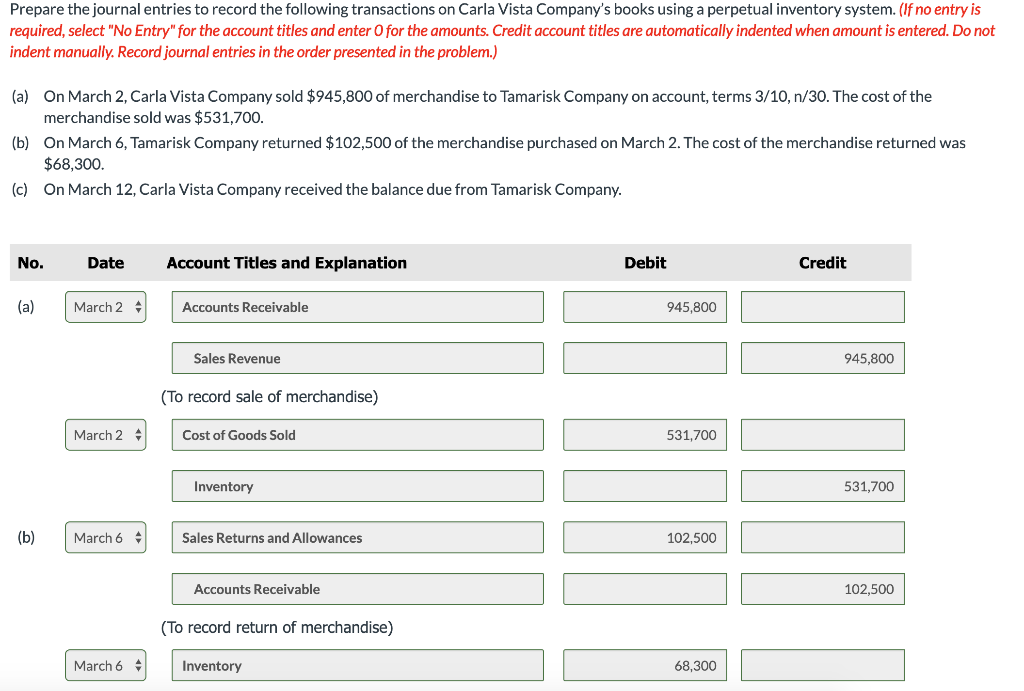

It is impossible to use cycle counting under a periodic inventory system, since there is no way to obtain accurate inventory counts in real time (which are used as a baseline for cycle counts). In the latter case, this means it can be difficult to obtain a precise cost of goods sold figure prior to the end of the accounting period.Ĭycle counting. Conversely, under the periodic inventory system, the cost of goods sold is calculated in a lump sum at the end of the accounting period, by adding total purchases to the beginning inventory and subtracting ending inventory. Under the perpetual system, there are continual updates to the cost of goods sold account as each sale is made.
Under a perpetual inventory system manual#
Conversely, the simplicity of a periodic inventory system allows for the use of manual record keeping for very small inventories.Ĭost of goods sold. It is impossible to manually maintain the records for a perpetual inventory system, since there may be thousands of transactions at the unit level in every accounting period.


Conversely, under a periodic inventory system, there is no cost of goods sold account entry at all in an accounting period until such time as there is a physical count, which is then used to derive the cost of goods sold.Ĭomputer systems. Under the perpetual system, there are continual updates to either the general ledger or inventory ledger as inventory-related transactions occur. There are a number of other differences between the two systems, which are as follows:Īccounts. Comparing Periodic and Perpetual Inventory Systems The periodic system relies upon an occasional physical count of the inventory to determine the ending inventory balance and the cost of goods sold, while the perpetual system keeps continual track of inventory balances. The more sophisticated of the two is the perpetual system, but it requires much more record keeping to maintain. Businesses using cost-plus pricing strategy: Since the unit cost of inventory changes every purchase, the average cost method isn’t suitable if you use the cost-plus pricing strategy because you have to revise the selling price when the average cost changes.The periodic and perpetual inventory systems are different methods used to track the quantity of goods on hand.Since there are only a few items to keep track of, it’s easiest and most accurate to keep a record of the actual cost of each item. Businesses with high-value, small-volume items: If your business deals with a small volume of high-value items, such as jewelry and vehicles, then it’s best to use the specific identification method.Hence, the IRS requires companies to use LIFO for bookkeeping purposes if they also use it for tax purposes. That’s why some businesses use LIFO to get tax savings because of a lower taxable income. Businesses using LIFO for tax purposes: The LIFO method of inventory costing yields the lowest net income during periods of increasing costs.If you don’t frequently purchase merchandise to replenish stocks, then you might prefer to use FIFO to match cost flow assumption with the physical flow of goods. Businesses with relatively low purchase volumes: The essence of the average cost method is to compute the average inventory cost every time you purchase inventory.You need not keep track of purchase dates and layers to determine inventory cost. Businesses looking for a simple inventory costing method: The AVCO method is the most straightforward inventory cost flow assumption to implement.It’s better to use the average cost method to make it easier to cost agricultural products without assigning a unit cost manually. Businesses selling agricultural produce: Maintaining the individual unit cost of agricultural produce is demanding since most are sold in bulk.For companies selling these products, the AVCO method best depicts their relationship by commingling them into one average unit cost. Businesses with highly intertwined products: Products that are highly intertwined, or complementary goods, have limited use if used individually.With the average cost method, you can smooth fluctuations in inventory prices by computing the average inventory cost per unit. Businesses with fluctuating inventory prices: Prices change because of economic and market conditions that companies can’t control, such as increases in the price of crude oil affect the price of other goods.


 0 kommentar(er)
0 kommentar(er)
